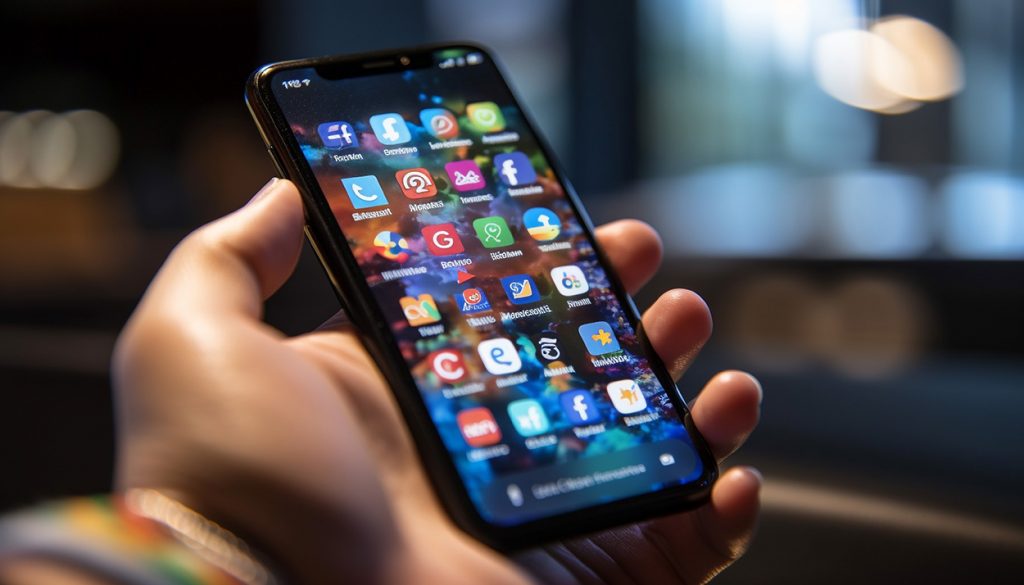
14 Fundamental Mobile UX Design Principles
Julian Wallis
14 min read

Do you want to create a mobile app that users will love and come back to again and again? Are you looking for the best design practices that will make sure your app is successful? Designing a great user experience is essential if you want people to keep coming back. That’s why understanding fundamental design principles can make all the difference when launching an app.
User experience (UX) design plays a crucial role in determining the success of any digital product. With a proven track record of crafting intuitive mobile experiences time and again, we are committed to providing you with the most effective principles to enhance your mobile UX design game.
In this blog post, we’ll cover key design principles that you should consider if you’re creating a mobile or web-based application. Knowing these foundational elements can help ensure your creation will be intuitive, attractive, and easy to use – making it more likely that customers who use it won’t drop off after just one try. Let’s dive in!
Understanding Mobile UX Design 🎨
What Is Mobile UX Design? 📱
Mobile UX design encompasses the process of creating user-friendly and intuitive interfaces for mobile devices. With the ever-increasing use of smartphones and tablets, optimising your website for mobile users has become imperative.
To be more precise, mobile UX design is the art of creating a delightful and meaningful experience for users while they interact with a mobile app. It goes beyond just how the app looks on the screen; it’s about understanding users’ emotions, goals, and challenges throughout their journey.
Importance Of Mobile UX Design 🔑
The significance of mobile UX design cannot be overstated. A whopping 57% of users won’t recommend a business if its mobile presence is poorly designed. That’s a huge impact on brand reputation and customer loyalty!
Mobile UX designers focus on various vital principles to ensure a top-notch user experience:
- Usefulness: The app must fulfil users’ needs and wishes, providing real value to their lives.
- Usability: The design should be straightforward and intuitive, making it easy for users to navigate and interact with the app.
- Desirability: Aesthetics matter! The app’s style should evoke positive emotions, making users genuinely want to use it.
- Findability: Navigating the app should be a breeze, allowing users to quickly find essential information.
- Accessibility: The app should be inclusive, catering to all users, including those with disabilities.
- Credibility: Users must trust the app and the brand behind it, ensuring a sense of reliability and authenticity.
Important Concepts In Mobile UX Design 🔬
User-Centric Design 👤
To bring these principles to life, mobile UX designers dive deep into user research, understanding their target audience and their needs. They create user personas and scenarios to guide their design decisions, ensuring that the app resonates with real users.
Mobile-First UX Design 📲
A mobile-first approach is essential, prioritising the most critical content and interactions for the mobile experience. Responsive design ensures that the app adapts seamlessly to various screen sizes and orientations, providing a consistent experience across devices.
Mobile UI Design 🤳
Visual design is crucial in mobile UX, using a consistent colour palette, typography, and imagery to create a cohesive and appealing interface. Visual cues, like icons and buttons, guide users through the app effortlessly. Animations and micro-interactions add that extra delight, enhancing the user experience and providing valuable feedback to users.
Iterative Cycle 🔁
Continuous improvement is the name of the game. Designers iterate on their designs based on user feedback and analytics data, striving to make the mobile app better and better.
All in all, mobile UX design is all about crafting a memorable and enjoyable journey for users, ensuring they have a positive experience that keeps them coming back for more. It’s a powerful tool that can make or break an app’s success in the competitive world of mobile technology. So, if you want your mobile app to stand out and delight customers, prioritise mobile UX design from the get-go!
Here are the key principles to follow for a seamless mobile user experience.
Principle 1: Understand The Problem 🚩
One of the key aspects of creating a quality mobile app is ensuring you have a problem worth solving. The problem could range from a corporate requirement, if you’re going after the B2B market, to something as simple as boredom.
You might be thinking that this step sounds pretty straightforward. It is. But you’d be surprised how many people come up with app ideas just because they seem “cool.” “Cool” isn’t a reason for building an app.
The simple answer is you should build an app because you have identified a problem in the world, and it’s your mission to fix that problem. When we work with clients, we always take them through a process that allows us to uncover the purpose of the app. We look to better understand the industry as a whole, the competition, business goals, and audience goals and dive deep into understanding the features of the app that truly matter to their audience.
Once we have clearly identified the audience and the pain that this app solves, we begin to design the user’s journey between pain and solution. All of this takes time. But unfortunately, It’s also one of the most frequently overlooked steps in the process, and as a result, we see millions of apps in the App Store graveyard.
Principle 2: Identify Key Functionality Requirements 📙
Once you’ve identified the problem, start brainstorming product requirements. It’s easy—and quite fun—to list the hundreds of different features your app should have. And that’s exactly what you should do!
Before you build your iOS app or Android app, create a list of the features that would make up your ideal app. From there, prioritise those items by what is the most important to your target audience versus what would be nice to have. Here’s an example of what such a list might look like if you were to build an app like Instagram:
1) Photo Capture
2) Photo Feed
3) Social Accounts
4) Photo Filters
5) Comments + Likes
6) Search Functionality
7) Private Accounts
8) Account Discovery
9) Online Advertising
10) Video Stories
Today, Instagram places all these features at your fingertips. But when the app first launched, it was much simpler and contained the minimum feature set necessary for testing the idea. As the app gained traction, Instagram began tackling the rest of its feature wish list and, over the years, has expanded its functionality.
The key is to take the first 3–4 features on your priority list and design your app for those. You can add other features once you demonstrate that you have an idea that resonates and your app is something people want.
Principle 3: Uniform Connectedness – Where Everything Clicks 🖱️
First up, we have uniform connectedness—a principle that ties elements together through consistent visual properties. By using colours and visual cues to connect related elements, users can easily group and comprehend information. Imagine how simple it becomes when navigating through side menus and social media clusters. It’s all about making connections that spark “ah-ha” moments for users!
Principle 4: Hierarchy – The Master of Structure 🧱
Now, let’s talk about hierarchy—the mastermind of the organisation. It arranges information in a structured way, ensuring users can grasp complex systems without the need for a tutorial. My app embraced tree hierarchy, prioritising essential features at the top and gradually descending to less frequently used ones. This way, users effortlessly access what matters most!
Principle 5: Facilitating User Experience 🙋
Demonstrating your app’s value by swiftly meeting user demands is paramount. Upon downloading an app, users seek to accomplish specific tasks. Thus, the initial impression must be exceptional. Disturbing users during app usage should be avoided or at least delayed.
Empower users to pursue their intentions unhindered. Whether searching for information, performing an action, or consuming content, they must achieve their objectives effortlessly. Frustration might lead them to abandon the app, never to return.
Simplify complex tasks into easily manageable steps ➗
Cognitive load should be minimised, representing the mental effort required for task completion. Users should be able to navigate step-by-step without feeling burdened by the process. For instance, consider a checkout process: Instead of requesting all information simultaneously, break it down into multiple steps—shipping address, billing details, credit card information, etc.
Provide clear guidance to users 🐕🦺
Your design should offer unambiguous direction. When a layout element might confuse users, utilise visual aids such as tooltips or captions to provide instructions.
Ensure critical information is visible 👀
To maximise app effectiveness, draw users’ attention to critical elements. Employ tactics like increasing the font size, adding whitespace, and ensuring sufficient colour contrast with the background. Keep navigation elements visible at all times, facilitating the completion of high-value tasks.
Principle 6: App Navigation Needs To Be Predictable 🔮
User familiarity with common design patterns is essential. Adhering to standard navigation methods found on the internet ensures user comfort.
Acknowledge users’ expectations concerning app navigation 🗺️
Past experiences with other apps shape their anticipations, including your app’s navigation. Incorporate common patterns into your design to ensure easy navigation.
While drawing inspiration from UX design trends and prevailing patterns, consider the overall context of your design. Slight modifications may be necessary for a seamless fit. Adhere to universally recognised navigational concepts to streamline your app’s design. Additionally, consult design guidelines from iOS and Android developers, which contain proven design patterns.
The 3-click Rule ⚂
The 3-click rule is simple. You just have to ensure users can access any part of your app within three clicks, keeping the navigation bar hierarchy simple.
This approach facilitates users in creating a mental map of your app’s structure. Always display the page name for clarity. In case of errors, allow users to return to the homepage or redirect them to relevant pages of interest.
Save user progress 💾
Modern users are busy and need to be more focused. Providing the ability to save progress enables them to resume tasks without starting over, even after closing the app.
Ensure cross-device accessibility 💻
For apps with desktop and smartphone versions, both channels should automatically sync logged-in users’ activities and progress. Seamless interchangeability between the app and website enhances user experience.
Principle 7: Accessibility – Design For All ♿
With accessibility in mind, applications must welcome all users without discrimination. It’s about providing a usable design for everyone, regardless of abilities. High contrast, voice support, and user-friendly icons make it a breeze for anyone to use a mobile application. Remember, accessible design benefits everyone, it’s not meant to be just those with specific needs!
Principle 8: Consistency in App Navigation 🧭
Refrain from introducing new, unfamiliar design elements. Users find comfort in familiar frameworks, so align your layout with their expectations.
For instance, position the closing “X” in the top right corner, adhering to users’ instinctive knowledge that it closes the application. Avoid dramatically altering the function of standard symbols. For example, don’t use the “X” symbol for actions other than closing.
Include a Save button at the bottom of each page to maintain consistency 💿
Light-coloured text fields for inputs are standard and should ideally align with your brand’s colour scheme. Avoid using black borders for input fields.
Principle 9: Effective and Prioritized Page Design 📃
Product labels should be descriptive and appealing, highlighting differences between options—Conduct Card Sorting to understand customers’ mental models.
Prioritise essential menu items in the primary menu and reserve others for the secondary menu. Visual Weight techniques can direct users’ attention to critical features. Employ changes in font size, background contrast, and whitespace to emphasise essential elements.
Understand users’ scanning patterns 🏁
Users often scan content, particularly the opening paragraphs. Place crucial messages at the beginning to ensure they catch users’ attention. Follow the Z-shaped pattern for visual content placement on web pages.

Principle 10: Brand Image Consistency 📦
Maintain consistency in buttons, input fields, and other elements based on your brand image. Ensure consistent navigation, especially if your app is based on an existing website. Avoid altering colour palettes and basic functionalities to prevent confusion. Design elements should help users recognise their purpose, particularly mobile users who lack hovering and cursor interactions.
Principle 11: Minimise User Input and Commitment 🔣
Avoid requesting setup information upfront, as users focus on problem-solving. Let users explore your app freely until login or other actions become necessary.
Minimise text input requirements, opting for alternative information collection methods. Provide optional input fields, avoiding unnecessary requests for data. Autofill features can streamline the process, such as using GPS data for address completion.
Principle 12: Prototyping To Perfect the Vision 👓
Prototyping allows designers to refine their work and test functionality. Most successful mobile applications go through multiple prototyping phases to ensure smooth navigation and seamless user experience. Prototyping refines and polishes the app to perfection.
Here’s a simple 3-step process of turning identified user requirements into fully functional UX prototypes.
Step 1: Create Sketches Of The Primary Screens 📏
After you figure out the highest priority features, start thinking through the user experience. One of the best ways to craft the user experience is, to begin with a few rough sketches of how the primary screens should look and feel.
Step 2: Turn Your Sketches Into Wireframes 🖼️
Once you have sketched your primary screens, you can start wireframing. A wireframe is a low-fidelity, simplified outline of your product consisting of boxes, words, lines and sometimes descriptions. It’s meant to lay the framework of where your app will go rather than the final look and feel of the app.
Step 3: Convert Wireframes Into A Prototype 📱
Wireframes that can be put in the hands of people who might want to test your product are great for feedback. You can turn low-fidelity wireframes into a basic prototype and share it with your target audience, friends, peers, and project stakeholders to help them understand and give feedback on the app.
Prototyping not only makes your product more real for investors, but it also gives your testers the ability to get a real feel for what it would be like to use the app and arms your developers with a better sense of the intended UX before finalising the design.
Principle 13: Optimize for Mobile and Diverse Users ✨
Responsiveness is the name of the game when it comes to designing a software application. The text should scale well on different screens, with each line containing no more than 40 characters. Adjust line spacing for readability. Visual content should be adaptable to both portrait and landscape modes. Ensure easily clickable buttons with adequate spacing to avoid accidental clicks on small screens.
Principle 14: Human-Centric App Design 👨
Use at least a 16px font size for legibility, considering users with impaired vision. Rely on symbols as well as colours to communicate, accommodating colour-blind individuals.
Caption and subtitle video and audio content for the deaf and hard of hearing. Use HTML features to describe visual images for users who can’t see. Avoid asking for gender information unless directly relevant to the app’s core functionality, respecting user privacy.
Takeaways – Important Mobile UX Design Tips 😎
To sum up, implementing the correct design principles can help you reach your desired goals when developing a successful mobile application. From UX to UI, the structure of an app should always have users in mind. If you want to give your app the best chance of success, focus on making sure it is attractive, user-friendly, and requires minimal effort.
Consulting with digital product experts can help you get it right from the start so that you are putting out an innovative and enjoyable product that users will love and keep coming back to again and again. So don’t wait any longer and book a discovery call with us today to discuss how we can aid in bringing your ideas to life by designing intuitive mobile applications.
Topics
Published On
August 04, 2023

